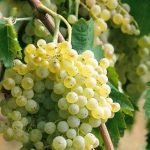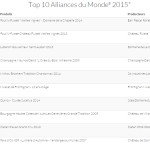The event marked fifty years since the legal protection of Pošip, an indigenous variety of Korčula
Korčula Island saw the 7th Days of Pošip, organised by the Smokvica and Korčula tourism boards, Smokvica County, Korčula Town, Čara District and 13 wineries, producing Pošip in Smokvica and Čara: Baničević-Car, Didovinka, Grošić, Kunjas, Milina, Plasa, Stanojević, Tomašić, Toreta and Vidilo from Smokvica as well as PZ Nerica, PZ Pošip and Šain-Marelić from Čara.
Pošip is one of the foremost and best Croatian white wines, made from the same name indigenous grape variety originating from limited localities in Smokvica and Čara. It is the first Croatian white wine with a protected geographic origin, since 1967.
The desire of the event organisers is to additionally brand Pošip and the oenology offer of this area, not just in Croatia, but also to show tourists the wealth of the wine offer of the island.
We especially point out the fact that winemakers decided to try out some other styles, besides the fresh Pošip. Currently the best known Pošip is probably Pošip Marco Polo by PZ Čara. However, for some time now wine lovers especially appreciate Pošips made by Luka Krajančić, and of recently his cousin Jakša Krajančić is also in their focus, in charge of PZ Nerica. These are established wine names, but this year three new wines from Smokvica came to the forefront. One of them is a Pošip sur lie by the Toreta winery – “A lovely wine, nurtured on fine residue, but my opinion is it should have been kept in a barrel for a bit more. Its time is yet to come,” said Tomislav Stiplošek, wine journalist and President of the G.E.T. Association. The other two wines are from Milina winery – Grandeca and Amfora. “Pošip Grandeca went through a shorter maceration and gained an exceptional fullness and very pleasant and not overly accented aroma. It has moderate alcohols and is finely rounded and balanced. In the end, in my opinion the best Pošip of the year if the Pošip Amfora, also by the Milina winery. I was sceptical if a Pošip can even yield the desired result from amphorae – I have been following this wine from the beginning, and now, when it saw the light of day and an attractive bottle, I can only say: hats off,” commented Stiplošek. As this is the 2015 harvest, marketed in 2017, and the first superior Pošip with geographic protection was from the 1965 harvest, thus Ante Milina dedicated his Pošip Amfora to the fiftieth anniversary of the protection of Pošip.
The seventh annual Pošip Days were ceremoniously opened in Čara. During Open Days, wineries have fliers with a list of wineries and branded tasting glasses, with which guests can visit all open wineries and enjoy the foremost Pošips and other wines.
The closing evening, the Night of Wine took place in Brna, where 13 winemakers presented their wines, all Pošip producers from Smokvica and Čara, and visitors also enjoy the performance of Puntamika a capella group and gastro specialties.
If you didn’t visit the Days of Pošip this year, come to the next ones, they will be even better.
About Pošip
The tradition of wine growing and winemaking on Korčula Island, especially in Smokvica and Čara, dates back to the 4th century BC, to the times of old Greeks. The development of wine growing production took place on the island through centuries, and the result are high quality wines, primarily Pošip – one of the best Croatian white wines. Work in the field and wine production in Smokvica and Čara have always been a tradition and way of life for the locals, witnessed by numerous evidence and large surfaces of Smokvica and Čara vineyards. Today these places can boast superior wines, widely known in Croatia and the world.
This year Pošip marks the 50th anniversary of its protection, an indigenous variety of Korčula and a rarity. It is the first white wine to be protected in Croatia by law, and mentioned for the first time in the second half of the 19th century in Smokvica, when a winemaker by the name Marina “Barbaca” Tomašić cleared a forest in the Stiniva canyon and found a wild vine which interested him due to its unusual taste and aroma. He proliferated it in his vineyard. Grace to the sandy soil there which phylloxera could not infect, the area still has original vines.
The very name Pošip comes from the shape of the grape, elongated, and the basic tool used in the field is a mašklin which has a dull part (pal) and pointy part (šip). Pošip is grown in the middle section of the island around Smokvica and Čara, and has been recently expanded to Dalmatian vineyards beyond the island.











